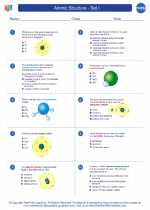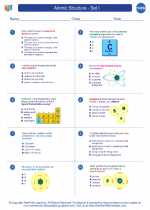Speakers
Speakers are transducers that convert electrical signals into sound waves. They are a crucial component of audio systems, including televisions, radios, home stereos, and public address systems. Understanding the principles behind speakers is important for anyone interested in audio technology.
How Speakers Work
Speakers operate based on the principles of electromagnetism. When an electrical signal is passed through a wire coil, it creates a magnetic field around the coil. This coil is attached to a diaphragm, which is typically made of paper, plastic, or metal. As the electrical signal fluctuates, the magnetic field also fluctuates, causing the diaphragm to move back and forth. This movement creates pressure waves in the surrounding air, producing sound.
Types of Speakers
There are several types of speakers, including:
- Dynamic Speakers: These are the most common type of speakers. They use a diaphragm connected to a voice coil, which is then connected to a magnet. As the electrical signal varies, the diaphragm moves, producing sound waves.
- Ribbon Speakers: These speakers use a thin metal ribbon suspended in a magnetic field. When the electrical signal passes through the ribbon, it vibrates, producing sound.
- Planar Magnetic Speakers: These speakers use a thin, flat diaphragm suspended in a magnetic field. When the electrical signal passes through the diaphragm, it moves, creating sound waves.
- Electrostatic Speakers: These speakers use a thin diaphragm with a conductive coating, placed between two perforated metal plates. When a high-voltage electrical signal is applied, the diaphragm moves back and forth, producing sound.
Speaker Components
Key components of speakers include:
- Diaphragm: This is the part of the speaker that moves to produce sound waves.
- Voice Coil: The coil of wire that is attached to the diaphragm and moves within the magnetic field to create sound.
- Magnet: Provides the magnetic field necessary for the speaker to function.
- Crossover: In multi-driver speaker systems, a crossover is used to split the audio signal into different frequency ranges, directing each range to the appropriate driver (e.g., woofer, tweeter, mid-range).
Speaker Impedance and Power Handling
When selecting a speaker, it's important to consider its impedance (measured in ohms) and power handling capabilities. The impedance of a speaker affects how much electrical current it will draw from the amplifier, while the power handling determines the amount of power (in watts) the speaker can handle without being damaged.
Study Guide
- Describe the basic principles behind how speakers work.
- List and explain the different types of speakers.
- Identify and describe the key components of a speaker.
- Discuss the importance of speaker impedance and power handling in speaker selection.
Understanding speakers and their operation is essential for anyone interested in audio technology. It's a fascinating area of study that combines principles of physics, engineering, and sound perception.
[Speakers] Related Worksheets and Study Guides:
.◂Chemistry Worksheets and Study Guides High School. Atomic Structure - Set I

 Worksheet/Answer key
Worksheet/Answer key
 Worksheet/Answer key
Worksheet/Answer key
